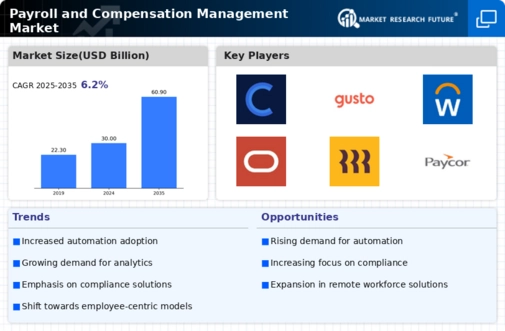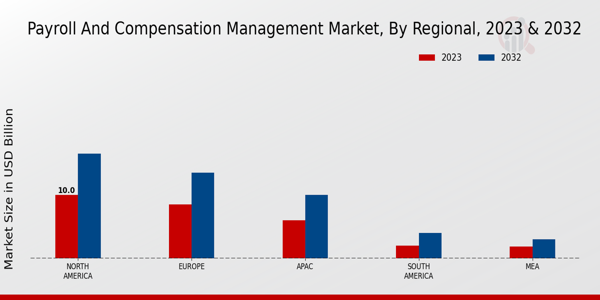The Payroll and Compensation Management Market has witnessed significant growth driven by the increasing need for organizations to streamline their payroll processes and enhance employee satisfaction. Various companies operating in this space are leveraging technology to provide innovative solutions that address the challenges related to compliance, time tracking, and data management. As businesses prioritize the efficiency of their HR functions, the competitive landscape is becoming increasingly dynamic, with both established players and new entrants vying for market share.
The demand for automated payroll systems that offer accurate and timely compensation processing coupled with robust reporting capabilities is a focal point for many organizations seeking to improve their operational efficiency.
Zenefits has carved a unique position for itself within the Payroll and Compensation Management Market, establishing a strong foothold by offering a comprehensive and user-friendly platform tailored to small and medium-sized businesses. The company excels in integrating payroll with other HR functionalities, facilitating an all-in-one solution that addresses various needs such as benefits administration, compliance, and employee self-service. Zenefits is particularly recognized for its cloud-based software that ensures a seamless user experience while automating payroll processes, significantly reducing manual errors and administrative burden.
This focus on delivering a simplified yet powerful service allows Zenefits to foster strong relationships with its clients and adapt to the evolving demands of the marketplace.
Kronos, on the other hand, presents a robust solution in the Payroll and Compensation Management Market, particularly noted for its advanced workforce management capabilities. The company emphasizes a data-driven approach, allowing organizations to leverage analytics for better decision-making regarding employee compensation and resource allocation. Kronos provides a scalable payroll platform that integrates well with various HR and operational systems, ensuring consistent and accurate payroll processing. Its rich set of features, such as compliance tracking and real-time reporting, empowers organizations to maintain a competitive edge while ensuring regulatory adherence.
Kronos continues to expand its offerings, focusing on enhancing the user experience and driving innovations that meet the changing needs of the workforce management landscape.





















